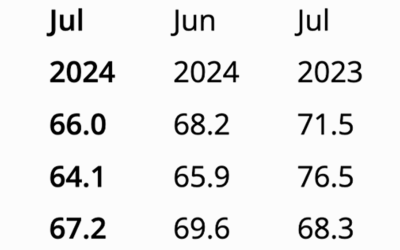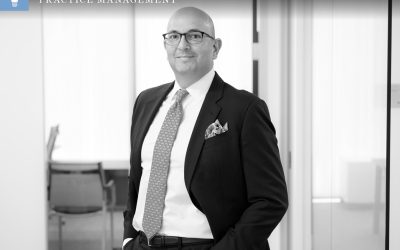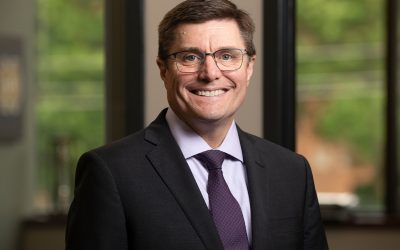An outcomes-based approach to retirement planning
An outcomes-based approach to retirement planning

Chuck Bigbie, CLU, ChFC, CFP • Tulsa, OK
Woodland Wealth Management • Geneos Wealth Management Inc.
Read full biography below
Proactive Advisor Magazine: Chuck, how did you enter the financial industry, and how has your career evolved?
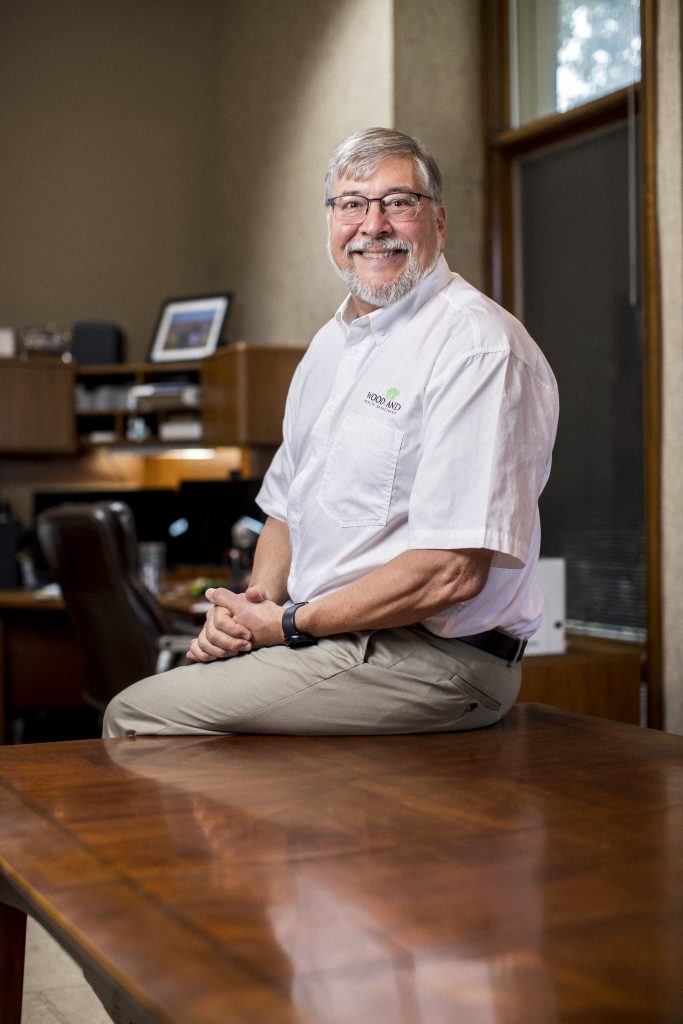 I have always been very inquisitive, scientifically minded, and into math. I was proficient with computers early in the game and worked in computer programming during high school. I ended up majoring in chemical engineering at the University of Tulsa and have also studied nuclear physics and nuclear chemistry.
I have always been very inquisitive, scientifically minded, and into math. I was proficient with computers early in the game and worked in computer programming during high school. I ended up majoring in chemical engineering at the University of Tulsa and have also studied nuclear physics and nuclear chemistry.
I spent time after college working as a thermal design engineer, but when the energy business hit a rough patch in Oklahoma in the 1980s, I decided it was time to switch careers. Financial services has always been in my blood. My grandfather and father both worked in the insurance business. My grandfather was a huge role model for me, as I saw firsthand the positive impact he had on the lives of clients and their families.
I was recruited by the New England Mutual Life Insurance Company, which was focused on pension plans, investments, and insurance products and services. I was trained in addressing a holistic view of client needs, including retirement planning. After close to two decades, I became an independent financial advisor in 1999. I have earned the professional designations of Chartered Life Underwriter, Chartered Financial Consultant, and Certified Financial Planner.
Our firm, Woodland Wealth Management, has experienced success and growth since its founding. With the guidance of an excellent coaching program, I have implemented several operating principles to create a differentiated firm. We have a unique process of planning and strategy evaluation for our clients. Our objective is to be one of the best firms in our industry.
An important piece of our business strategy is to be viewed as a thought leader in our community. I have been teaching educational seminars at local college campuses for over 20 years. These six-hour courses, called Modern Retirement Planning, present the latest concepts for structuring a successful retirement plan. They are interactive and provide the opportunity for attendees to set up personal consultations. That has been an effective means of building recognition for our firm and identifying prospective new clients. I also wrote the 2019 Amazon bestseller “The Retirement GPS: How to Avoid the Roadblocks and Detours on Your Retirement Journey” and have contributed articles to U.S. News and World Report and Kiplinger.
How do you articulate your mission to prospects and clients?
 Our firm delivers a customized and outcomes-based approach to wealth accumulation and retirement planning. We describe this mission through the concepts presented in my book, “The Retirement GPS.” The theme of how to successfully navigate the retirement journey carries through to our seminars, our website, and many of our communications pieces.
Our firm delivers a customized and outcomes-based approach to wealth accumulation and retirement planning. We describe this mission through the concepts presented in my book, “The Retirement GPS.” The theme of how to successfully navigate the retirement journey carries through to our seminars, our website, and many of our communications pieces.
The economic downturns of this century motivated me to take a fresh look at our approach to retirement planning. Assumptions we once took for granted regarding financial markets, the global economy, retirement savings plans and pensions, and a host of government programs were no longer true. Longevity risk was an especially underappreciated threat to retirement plans.
For the purposes of my book and our retirement-planning classes, I ask clients to imagine their retirement being like a road trip from Tulsa, Oklahoma, to Seattle, Washington. Most retirement journeys last over 25 years, so clients need to think about and plan for a long road trip. I ask them to consider the following: potential breakdowns; road and weather hazards or detours; the amount of gas, food, and lodging they will need; how fast they will be driving; and the stops they will be making. It is going to take a lot of planning to successfully complete this trip.
Similarly, retirement planning has to take into consideration numerous risk factors and potentially changing circumstances. Unexpected peril is the greatest enemy of a good retirement plan. We consider ourselves a financial-engineering firm, designed to plan ahead and create outcomes-based financial and retirement plans for individuals and families. We utilize a five-step process to simulate cash flows in retirement, computing the probabilities for financial success as we guide our clients along their retirement journey.
Can you briefly describe your firm’s five-step process?
Everything we do is based on understanding our clients’ retirement goals, total financial situation, and values. Our ultimate objective is for clients to complete their retirement journey with enough inflation-adjusted income to meet their living expenses and, more importantly, to achieve their personal aspirations.
Our five-step process helps to build a customized retirement road map for each client. The first step is client education, where I discuss broad financial concepts and the issues involved in planning for retirement. What are the potential hazards, risks, and roadblocks—as well as opportunities? The second step is both quantitative and qualitative discovery and goal setting. This is a comprehensive look at a client’s complete financial picture, including the client’s current balance sheet and potential sources of retirement income. From this step, we can input data and clarify goals for the plan.
In the third step, we analyze the allocation of resources for the financial plan. This is a dynamic process using advanced financial-simulation systems. We can evaluate the probabilities for success over long time periods of various planning scenarios. This process addresses the most important quantitative objective of a retirement-income plan, which is the impact of cash flow, asset allocation, and sequence of returns.
After we analyze this data, we proceed to the fourth step, where we provide our strategic recommendations to clients and discuss the pros and cons of different approaches. Upon agreement on strategies across all of the major elements of the plan, we begin implementation and set up the reporting system for each client. The fifth step involves periodic reviews of each client’s financial or retirement plan, evaluating progress toward objectives and rebalancing allocations if necessary or adjusting cash-flow parameters. We evaluate the tax efficiencies of different strategic allocations and recommend tax-saving strategies as needed.
“Our firm delivers a customized and outcomes-based approach to wealth accumulation and retirement planning.”
Describe your approach to investment risk management.
For every client, we create an investment policy statement that captures their risk tolerance, time horizon, and investment goals. We then work closely with third-party managers to build a risk-appropriate portfolio that meets the client’s needs. For conservative clients concerned about retirement income, we might typically see an allocation between variable annuities and a managed investment portfolio.
When I first started in the business, everything was asset-allocation-driven and rebalanced. There were no tactical strategies. There were no intelligent systems and no active management. It was pretty much “set it and forget it” with the occasional rebalance. And then we saw some market corrections in the 1990s. In the early 2000s, many of those traditional portfolios were decimated. There was no mechanism to say, “It’s time to go cash,” or switch from stocks to bonds, or move from Europe to Japan. As a result, when there would be huge downturns in the market, the recovery period was protracted.
When we switched to the independent advisory channel, we utilized active-management firms that had strategies with the ability to move to cash in dangerous markets, or to be strongly allocated to equities when the trend was right, or to change the asset class or mix of asset classes. We found that there was more downside protection. If clients didn’t lose as much, they didn’t have to recover as much. It would be a much smoother, more controlled ride, with an emphasis on risk management and taming volatility.
The bottom line is that we believe dynamically risk-managed investment strategies are aligned with our overall objective of helping clients navigate the pitfalls they may encounter along their retirement journey.
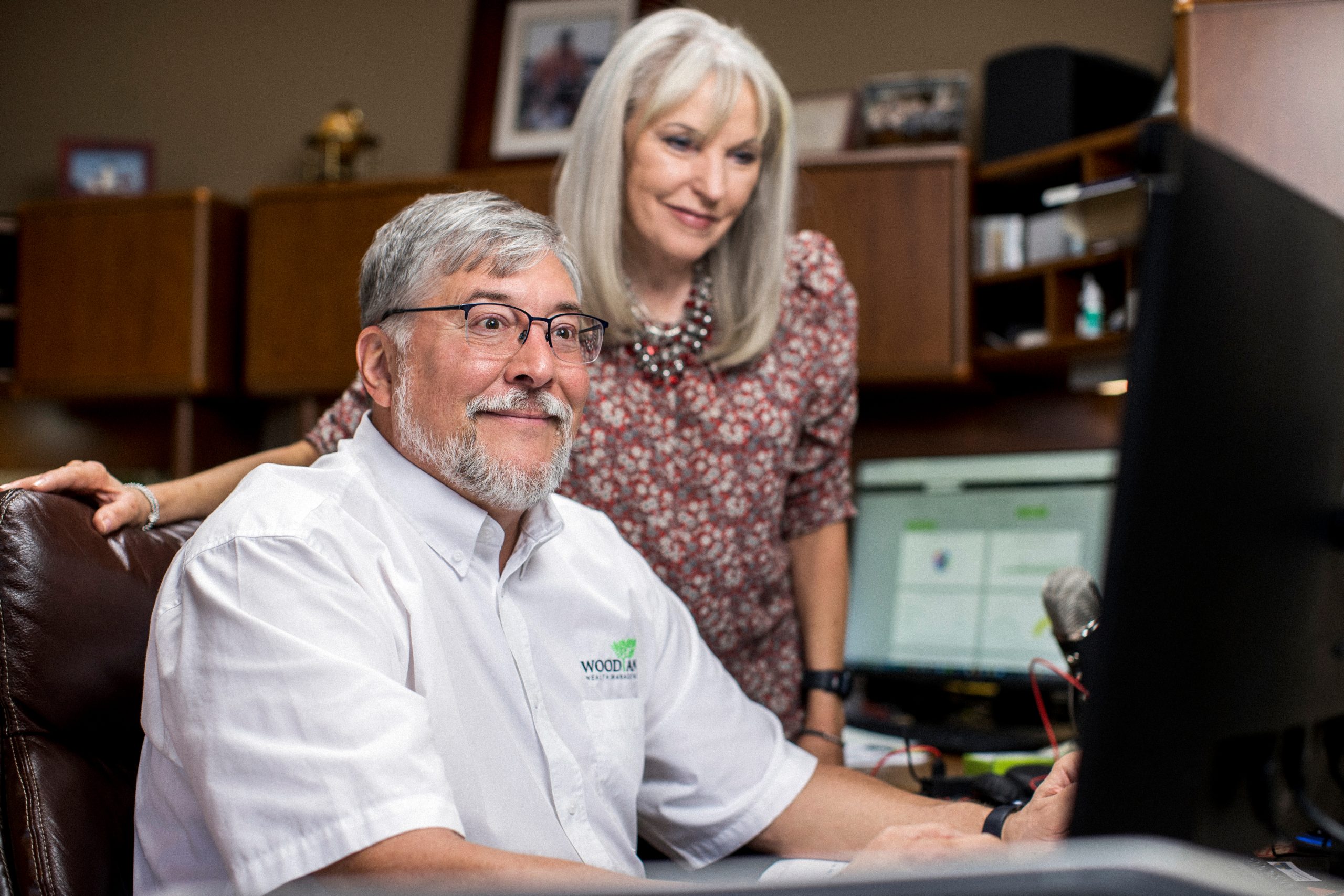
Chuck and Glenda Bigbie
How would you like clients to perceive the experience of working with your firm?
I would hope their perception is that we are very effective listeners, educators, and strategists. I want them to feel that we clearly identify expectations for their plan and then deliver on those expectations. It’s also important to us that they see that we take our fiduciary duty seriously, with a dedication to outcomes-based solutions that work solely to address their specific objectives.
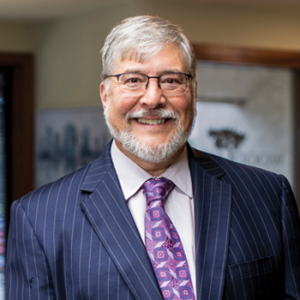 Chuck Bigbie, CLU, ChFC, CFP, is the president and principal advisor at Woodland Wealth Management, located in Tulsa, Oklahoma. He specializes in an outcomes-based approach to financial and retirement planning.
Chuck Bigbie, CLU, ChFC, CFP, is the president and principal advisor at Woodland Wealth Management, located in Tulsa, Oklahoma. He specializes in an outcomes-based approach to financial and retirement planning.
Mr. Bigbie was raised in Tulsa, where he attended public schools. He achieved the rank of Eagle Scout (BSA) and was an accomplished musician, performing with Oklahoma’s all-state high school orchestra. He was a member of his school’s chemistry and physics clubs and says he was “highly proficient with computers.”
Mr. Bigbie’s grandfather and father both had careers in the financial industry, managing agencies that provided life insurance, pension plans, and investment-management services. His mother was a professional ballerina who later became a model and remained involved in dance arts. Mr. Bigbie’s grandfather was a major influence and role model. Mr. Bigbie says, “I saw firsthand the positive impact he had on the lives of clients and their families.”
Mr. Bigbie received a Bachelor of Science degree in chemical engineering from the University of Tulsa. Following college, he worked as a thermal design engineer. With the energy industry undergoing transition, Mr. Bigbie took a new career path into financial services. He was recruited to New England Mutual Life Insurance Company (The New England), which was focused on pension plans, investments, and insurance products and services. He says he received strong mentorship and was trained in addressing a holistic view of client needs. He earned the professional designations of CLU, ChFC, and CFP early in his career.
Mr. Bigbie became an independent financial advisor in 1999. He has been teaching retirement-planning seminars for over 20 years. Mr. Bigbie wrote the 2019 Amazon bestseller “The Retirement GPS: How to Avoid the Roadblocks and Detours on Your Retirement Journey.” He has also contributed articles to U.S. News and World Report and Kiplinger. He is a member of the Tulsa chapter of the Financial Planning Association.
Mr. Bigbie and his wife, Glenda, have three adult children. They enjoy traveling in their RV, boating, and volunteering for a cat rescue organization. Mr. Bigbie participates in ham radio communications, builds model railroads, and explores telescopic astronomy. He was first chair string bass in the Tulsa Community College Orchestra for 20 years.
Disclosure: Securities offered through Geneos Wealth Management Inc. Member FINRA/SIPC. Advisory services offered through Geneos Wealth Management Inc., a registered investment advisor.
Modern Retirement Planning is a trademark of Foresight Education LLC. Chartered Life Underwriter, CLU, Chartered Financial Consultant, and ChFC are registered trademarks of the American College of Financial Services. CFP and Certified Financial Planner are registered trademarks of the Certified Financial Planner Board of Standards Inc. (CFP Board).
Photography by Shane Bevel
QUICK TIP

How clients can avoid roadblocks along their retirement journey
Chuck Bigbie, CLU, ChFC, CFP, is the president and principal advisor at Woodland Wealth Management, located in Tulsa, Oklahoma. He specializes in an outcomes-based approach to financial and retirement planning.
Mr. Bigbie says, “Many of the concepts presented in my Amazon best-selling book, ‘The Retirement GPS: How to Avoid the Roadblocks and Detours of Your Retirement Journey,’ represent important issues that we address with our clients. The theme of how to successfully navigate the retirement journey carries through to our seminars, our website, and many of our communications pieces.”
The book identifies the potential risks facing individuals and families planning for retirement—and how a comprehensive financial plan developed in concert with a qualified financial advisor can help address these concerns.
Some of these risks include the following:
- Longevity: People are living longer and will require more money in their retirement years.
- Social Security risk: Can individuals and families count on the maintenance of current benefit levels?
- Pension underfunding: Many pension plans and the Pension Benefit Guaranty Corporation (PBGC) are underfunded. How will this impact plan participants and U.S. taxpayers?
- The “wellness” challenge: As people age, they will face continued rising health-care costs and uncertainty around government health-care programs in the future.
- Stimulus, interest rates, taxes, and inflation: Has government spending mortgaged the future while depressing returns on investments?
- “Investors behaving badly”: Self-directed investors are prone to behavioral biases, manage risk poorly, and typically underperform “the market.”
- The impact of debt: Eliminating debt provides many benefits to retirees, both financially and emotionally.
- Sequence-of-returns risk: Most retirees do not understand or plan for significant market declines early in their retirement years.
RECENT POSTS




